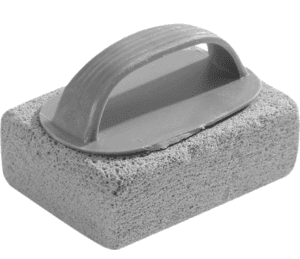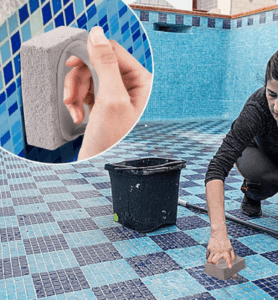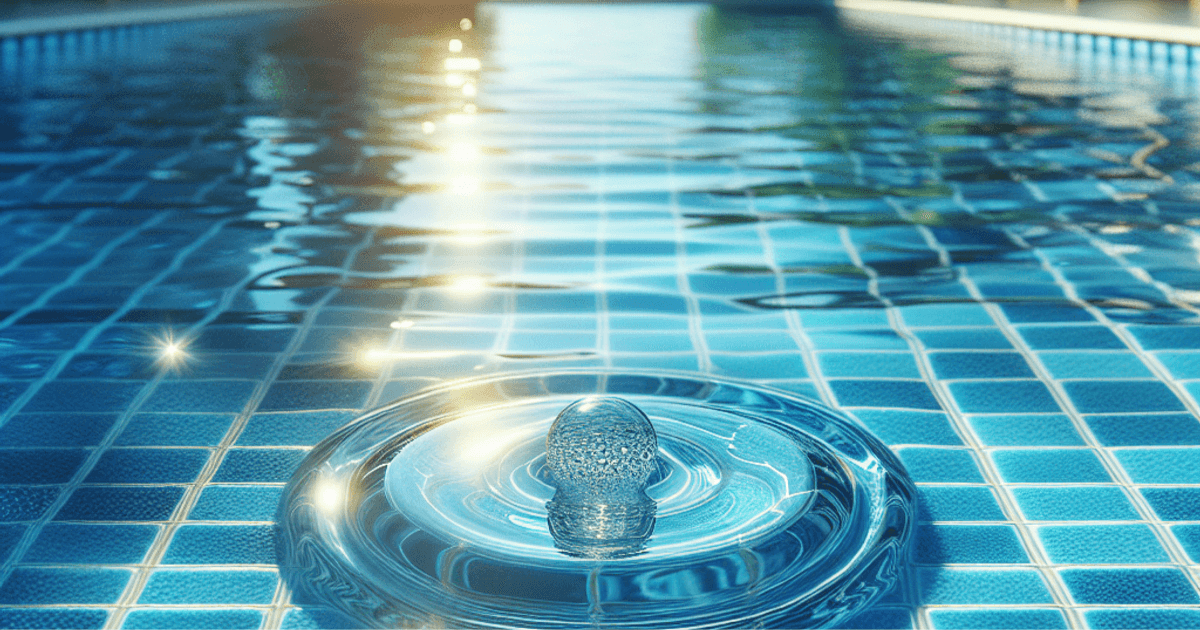Introduction
Have you ever found those ugly white or greyish stains on your pool tiles? These, sometimes referred to as pool scales, can cause nuisance. Luckily, a pool scale remover can deal with these tough stains. Maintaining a clean pool is not only about appearances; it is also essential for the pool’s health. Calcium scaling, in particular, can limit water circulation and lower chlorine effectiveness, affecting appearance and functionality.

Why Pool Maintenance Matters
- A clean pool guarantees a safe swimming environment.
- Protects surfaces and pool equipment from damage.
- Helps your pool endure for more time.
What is a Pool Scale?
Mineral deposits—mostly calcium carbonate or calcium silicate—that fall on your pool surfaces form a pool scale. If left untreated, these deposits may contaminate your pool and potentially provide a habitat for microorganisms.
In This Article
You’ll discover:
- The various types of pool scales and their visually appealing qualities.
- Typical reasons and effects of pool scale development.
- Practical techniques for removing pool scale.
- Detailed reviews of Three well-known pool scale removers: Jack’s Magic SCALE OFF, Leslie’s Stain and Scale Remove, and Natural Chemistry Metal Free.
- Advice on selecting a suitable product for your requirements.
- Preventive actions to keep your pool sparkling clean.
Discover how knowledge and appropriate instruments will help maintain a perfect swimming environment!
Understanding Pool Scale
The mineral deposits are also known as pool scales that accumulate on the surfaces of your pool, usually causing unsightly and sometimes harmful buildup. These scales mainly consist of calcium compounds, which crystallize out of the water under certain conditions.
Types of Calcium Scaling
- Calcium Carbonate
- Calcium Silicate
Calcium Carbonate
The most common kind of pool scale is calcium carbonate. Usually showing up as a whitish or greyish film on pool surfaces, it can have a rough, sandpaper-like feel. Removing this kind of scaling is more straightforward than removing calcium silicate.
Visual Characteristics:
- Fine white film or powdery residue.
- Sometimes, they look like stalactites or stalagmites that surround sources of water.
Calcium Silicate
Calcium silicate is less commonly employed but much more challenging to handle. Often needing professional assistance to be removed entirely, this type creates more complex, more substantial deposits.
Visual Characteristics:
- Grayish-white deposits.
- More challenging and more cement-like in appearance.
- Hard to remove using standard cleaning techniques.
Differences Between Calcium Carbonate and Calcium Silicate
While pool water’s excess minerals cause both kinds, there are significant differences:
- Ease of removal: Calcium carbonate is usually easier to remove with household cleansers such as vinegar or specific pool cleaners. On the other hand, calcium silicate often calls for more vital chemicals or expert cleaning services.
- Formation condition: Calcium carbonate occurs when the pH or alkalinity levels are excessive. However, frequent maintenance helps to control it. Calcium silicate points to extended water imbalance problems and often forms over an extended period.
Good pool upkeep depends on an awareness of these differences. Knowing the type of scale, you are working with will enable you to select appropriate removal tools and products. This information saves time and protects your pool against possible damage from incorrect cleaning methods.
Common Causes and Effects of Pool Scale Formation
The maintenance problems of pools depend significantly on the elements causing calcium scaling. The primary culprits are high calcium levels, sometimes exceeding 400 ppm. Rising calcium levels cause the water to precipitate, which ugly forms on pool surfaces. Still, another essential consideration is insufficient water balance. Scaling is more likely in your pool if the pH is regularly high—above 7.8—or if there is an imbalance in alkalinity.
Environmental Influences
Several external factors can make the pool scale worse:
- Organic Debris: As they break down and release minerals into the water, leaves, pollen, and other organic items can help to scale.
- Water Temperature: Warmer water raises the possibility of calcium precipitation.
- Dissolved Solids: High total dissolved solids (TDS) concentrations may accelerate scale development.
Potential Consequences of Neglecting Pool Scale
Ignoring pool scale can cause several problems, including affecting looks and utility:
- Compromised Water Circulation: Scale built-in pipes and filters may block water flow, lowering the circulation system efficiency in your pool.
- Reduced Chlorine Efficiency: Scaling may generate areas where algae and bacteria thrive, reducing chlorine efficiency. Chlorine’s struggle to penetrate specific locations results in more chemical use and possible health risks.
A well-kept pool not only looks great, but it runs more effectively as well. Regular tests for balanced water chemistry and high calcium levels help avoid several typical scaling problems.
Methods for Removing Pool Scale Effectively
Depending on the type of pool and its severity level, you might address the pool scale in numerous ways. Every method has advantages, so let’s review some well-known options.
Non-Abrasive Techniques


1. Pumice Stone
A pumice stone will help exceptionally well for minor calcium carbonate buildup. Removing the impacted areas gently will help remove the scale without compromising the pool surfaces. It’s an eco-friendly option that’s easy on your pool’s finish.
2. Pool Scale Remover
Specialized products designed especially to remove calcium deposits. Many times, these removers include a combination of chemicals targeted at scale accumulation without calling for elbow grease.
Chemical Solutions
1. Muriatic Acid
Often used to break out difficult calcium silicate deposits, muriatic acid is known for its strength. This chemical is vital and should be handled carefully. Using safety gear like gloves and goggles is essential, as is closely following directions to prevent damage to your pool or injuring yourself.
2. Vinegar
Vinegar can help with minor scaling problems and offers a mild substitute for solid chemicals. Cover the scaled area with it, let it sit for some time, then gently scrub.
Safety Precautions
Using chemical solutions—powerful ones like muriatic acid—safety cannot be emphasized:
- Always wearing protective clothing, gloves, goggles, and other things is a good habit.
- If you are working indoors, you must check for ventilation.
- Safely store chemicals away from pets and children.
These techniques offer a road map for precisely removing pool scale. The correct method can help protect the environment and your health while keeping your pool immaculate.
Popular Pool Scale Removeerrs Reviewed
Although a shining, clean pool is a delight, handling difficult scale deposits can be costly. Let’s examine the details of three well-known pool scale removers—Jack’s Magic SCALE OFF, Leslie’s Stain and Scale Remove, and Natural Chemistry Metal Free—to assist you in making a wise choice.
Jack’s Magic SCALE OFF Review
Key Features
- Designed primarily to remove efflorescence, the calcium carbonate scale.
- works nicely on grout and tile above the water line.
- Non-acidic formula makes it safer for many different pool surfaces.
Effectiveness
Jack’s Magic SCALE OFF works particularly well when addressing calcium carbonate deposits. Users often report noticeable changes in just a few days of use. Those cautious of strong chemicals choose the product because of its non-acidic character.
Pros
- Simple to use: Apply it to the affected area straightforwardly.
- Safe formula: non-acidic, lowering the possibility of surface damage in pools.
- Flexible: Good for tiles and grout, among other surfaces.
Cons
- Limited scope: Mostly beneficial on calcium carbonate; might be less intense against other scale forms.
- Pricey: More expensive than some other goods on the market.
Leslie’s Stain and Scale Remove Review
Key Features
- Targets both stains and scale
- Contains sequestration agents that help prevent future buildup
- Compatible with all pool surfaces
Effectiveness
Leslie’s Stain and Scale Remove is a dual-action product that addresses existing scale and potential future issues. It works well on different stains, making it a versatile addition to your pool maintenance arsenal.
Pros
- Multi-purpose: Tackles both stains and scale, offering comprehensive cleaning.
- Prevention-focused: Sequestration agents help in preventing new deposits.
- User-friendly: Suitable for all types of pools and easy to apply.
Cons
- Moderate speed: It might take longer to show results than specialized products.
- Frequent application: This may require multiple treatments for severe scaling.
Natural Chemistry Metal Free Review
Key Features
- Chelating agent designed to bind metals in the water
- Prevents metal staining and scaling without using phosphates
- Eco-friendly formula safe for use with all sanitizers
Effectiveness
Natural Chemistry Metal Free excels in preventing metal-induced scaling. Its eco-friendly composition makes it an attractive option for environmentally conscious pool owners. While it’s not a direct stain remover, its preventative properties are commendable.
Pros
- Eco-friendly: Phosphate-free formula safe for the environment.
- Preventative action: Effective at keeping metals in suspension, thereby preventing deposits.
- Compatibility: Works well with all types of pool sanitizers.
Cons
- Preventative focus: More practical at removing existing scales than some other products.
- Specific use-case: Best suited for metal-related issues rather than general scaling.
Making an informed choice among these options depends on your specific needs. If you’re dealing with stubborn stains on your pool’s ceramic tiles, you might also consider keeping them off using specialized methods.
Choosing the Right Pool Scale Remover for Your Needs
When selecting the best product for pool stains, it’s essential to consider a few key factors. Different scaling issues require different approaches, and your personal preferences also play a role.
Type of Scaling Issue
First, identify the type of scale you’re dealing with:
- Calcium Carbonate: Appears as a fine film or stalagmite-like residue. Easier to remove with products like Jack’s Magic SCALE OFF.
- Calcium Silicate: Manifests as greyish-white deposits. Often requires professional intervention due to its stubborn nature. For extensive issues, you might need an expert guide to gunite pool repairs.
Product Preferences
Consider what matters most to you when choosing a pool scale remover:
- Effectiveness: Look for products specifically designed for your type of scale. For instance, Leslie’s Stain and Scale Remove is excellent for versatile use but may be less potent against tough calcium silicate.
- Eco-Friendliness: Natural Chemistry Metal Free offers a biodegradable formula that’s gentle on your pool and the planet if you prefer environmentally friendly options.
- Ease of Use: Some removers are more user-friendly than others. Products requiring minimal scrubbing or simple application processes can save time and effort.
Cost Considerations
While premium products often promise quick results, budget-friendly options can be effective if used consistently. Determine your budget and find a balance between cost and performance.
Selecting the correct pool scale remover involves understanding your needs and preferences. Once you’ve identified these factors, you’ll be well-equipped to maintain a pristine swimming environment!
Preventative Measures Against Pool Scale Formation
Keeping your pool scale-free starts with regular water testing. By frequently checking the pH, alkalinity, and calcium hardness levels, you can catch imbalances before they become a problem. Here are the recommended chemical balances to aim for:
- pH Levels: Maintain between 7.2 and 7.6
- Total Alkalinity: Keep it between 80 and 120 ppm
- Calcium Hardness: Best kept between 200 and 400 ppm
Consistently monitoring these parameters helps in preventing pool stains and scale.
Another key player in this battle is the use of sequestration chemicals. These products bind to calcium and other metals, keeping them suspended in the water instead of forming deposits. Look for a high-quality sequestrant that’s compatible with your pool type.
Quick Tips:
- Test your pool water at least once a week.
- Adjust chemical levels as needed to stay within recommended ranges.
- Use a sequestrant regularly, especially with hard water or high metal content.
By incorporating these practices into your routine, you’ll significantly reduce the need for a pool scale remover down the line!
Regular Maintenance Tips
Maintaining the cleanliness of your pool goes beyond simply addressing those tough stains. Enjoying an excellent, welcoming swimming environment depends on regular upkeep. Here are some essential tips on pool maintenance:
Best Practices for Keeping a Clean Pool Surface
- Brush and Skim Regularly: Wall and floor scrubbing of your pool should be done weekly with a pool brush. This reduces algae and stops scale accumulation.
- Cleaning: Vacuum Debris that settles at the pool’s bottom can be helped to be removed by manual or automatic vacuums.
- Examine Filters: Frequent cleaning or replacement of filters guarantees their effective operation.
Using Automatic Cleaners Effectively
Time and effort can be saved with automatic cleaners. The following will help you make the most of them:
- Choose the Right Cleaner: Among the varieties are robotic, pressure-side, and suction-side cleaners. Choose one depending on the requirements of your pool.
- Regular Maintenance: Even automatic cleaners require regular inspections and cleaning to run as best.
- Optimal Scheduling: Set your cleaner to run during off-peak to guarantee complete cleaning free from interruption and help lower energy bills.
Reducing Organic Waste Levels to Prevent Buildup
Organic waste can extensively address scalability and other problems. Minimizing it will look like this:
- Cover Your Pool: Covering your pool will help to stop leaves, dirt, and other trash from getting in when not in use.
- Enzymes: Products based on enzymes can break down organic waste, lightening your filtration system’s load.
- Regular Skimming: Use a tiny mesh net to skim the surface daily, gathering leaves, insects, and other floating trash.
For more detailed guidance on maintaining your pool, consider reading about causes and solutions of pool deck crack repair to keep your entire pool area in top shape.
Your pool will look fantastic all season long by including these easy but powerful ideas in your schedule!
Conclusion
Knowing how to maintain your swimming pool correctly can help you to keep it clean. The following are some essential characteristics to keep in mind:
- Regular water testing: Balance the pH, alkalinity, and calcium hardness values to stop scale development.
- Using Quality Products: Pick dependable goods like Leslie’s Stain and Scale Remove or Jack’s Magic SCALE OFF to remove the existing scale successfully.
- Preventive Actions: Keep minerals suspended in the water using sequestration compounds, lowering the chance of accumulation.
Including these techniques in your daily life solves present problems and helps avoid ones down the road.
For additional tips on pool maintenance and safety, you might be interested in learning how to install a pool light with a safety ground wire to enhance both the functionality and aesthetics of your pool.
FAQs (Frequently Asked Questions)
1. What is a pool scale, and why should it be removed?
Pool scale is the accumulation of either calcium carbonate or calcium silicate on pool surfaces. It affects the pool’s appearance as well as its health, therefore compromising water circulation and, if left untreated, lowering chlorine efficiency. Understanding the differences between a salt water pool vs chlorine pool can also help in managing scaling issues.
2. For what typical reasons does pool scale develop?
High calcium levels in the water, poor water balance, and organic waste are common reasons for pool scale development. Furthermore, environmental elements influence its development.
3. How many pool scales can be efficiently eliminated?
Good ways to remove pool scales are chemical solutions like muriatic acid and non-abrasive approaches, including pumice stones. Handling strong chemicals calls for careful attention to safety.
4. For my use, what pool scale remover would be appropriate?
When choosing a pool scale remover, consider elements such as the type of scaling problem you are having and any particular preferences you might have for the eco-friendliness or effectiveness of the product.
5. Which preventative actions can stop pool scale development?
Maintaining specified chemical balances (pH and alkalinity) and routine water testing constitute part of preventative actions. Additionally helpful in preventing scaling are sequestration compounds.
6. How might one maintain a clean pool regularly?
Using automated cleaners efficiently and lowering organic waste levels to stop accumulation help to preserve a clean pool surface. Frequent upkeep will enable your swimming area to be clean.






